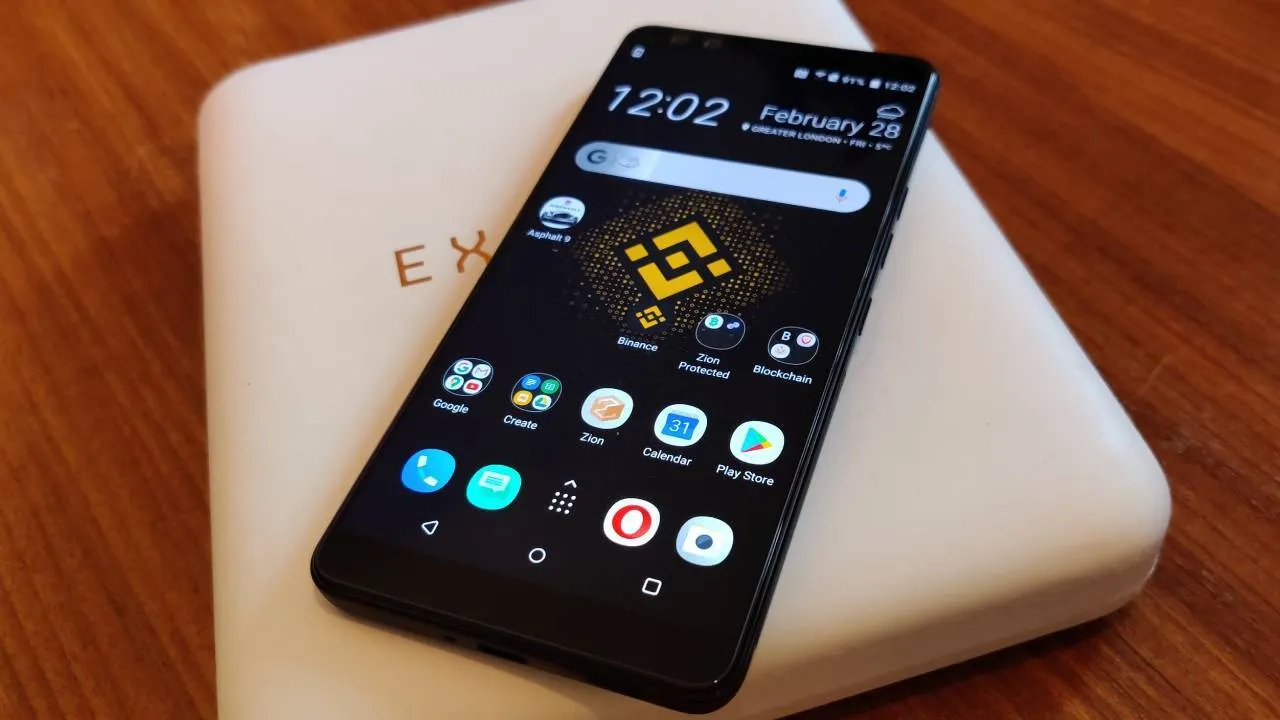In brief
- The HTC Exodus 1 is the first true "cryptophone".
- It includes Zion vault, a built-in hardware wallet.
- The Binance Edition comes with a unique design plus preloaded dapps and wallpaper.
Unboxing the HTC Exodus 1 is an exercise in trepidation. We’ve been hurt before. Its smaller sibling, the Exodus 1s, is a phone that disappointed us when we reviewed it, with lacklustre performance across the board.
On paper, the flagship Exodus 1 promises to do much better. With a higher spec sheet, it arrives with the same crypto smarts as the rest of HTC’s Exodus range—namely a built-in encrypted hardware wallet. We’re reviewing the recently-released Binance Edition, which comes with the added bonus of being the world’s first Binance chain-ready cryptophone.
It’s certainly an interesting recipe, but there’s still a case to be made for simply buying a much cheaper hardware wallet, sticking it in a safe place, and calling it a day. Does the HTC Exodus 1 Binance Edition do enough to earn its keep? Let’s find out.
HTC Exodus 1 Binance Edition: Crypto features
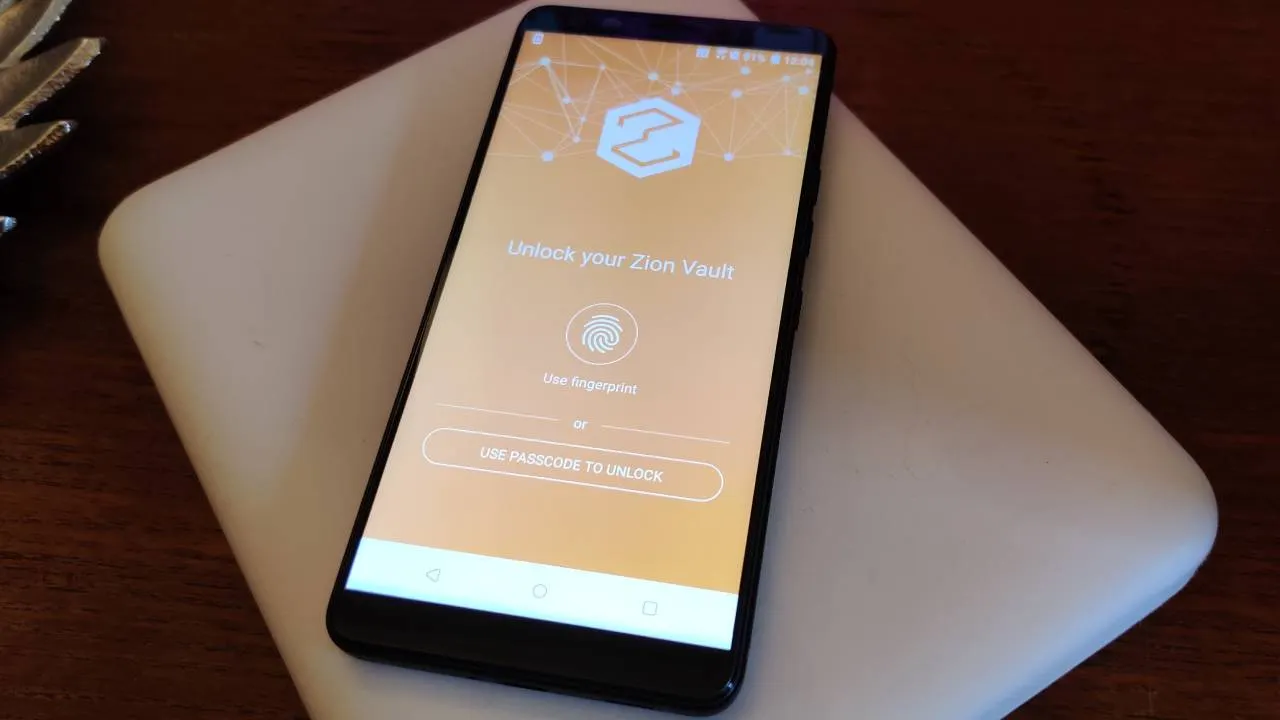
We’ll get into the Exodus 1’s performance in a sec, but first let’s take a closer look at its crypto features.
The Exodus 1’s built-in Zion wallet is hardware based, which means it’s completely isolated from the rest of the handset’s internals, protecting it from any nefarious malware or viruses. Trusted Execution Environment (TEE) software allows you to protect information like private keys by isolating the operating system when signing transactions.
At its core, Zion is essentially a hardware wallet, similar to those offered by Trezor or Ledger. However, unlike hardware wallets that can be stored in a safe, secure place, your smartphone travels with you, opening it up to far more risks. It doesn’t take much to break, lose or have a phone stolen these days—hardly ideal for a crypto wallet.
If the worst does happen, though, you can always recover your wallet with a 12-word seed phrase. This is generated when when you set the wallet up, which only takes a few minutes. For an extra layer of security, you can also split your seed phrase among three to five trusted contacts.
Once you’ve set up the Zion wallet, you can send and receive coins as you would using any other crypto wallet, and download from a relatively scanty selection of decentralized apps (dApps).
So where does Binance come into all this? Well, its decentralized exchange, Binance DEX, is integrated into HTC’s Zion Vault. Having said that, you can just as easily download dApps like Binance DEX on other versions of the Exodus too. The Binance Edition, however, has the added bonus of some branding across the back cover and some wallpapers, not to mention the fact that at $599, it’s $100 cheaper than the original Exodus 1.
HTC Exodus 1 Binance Edition: Node runner
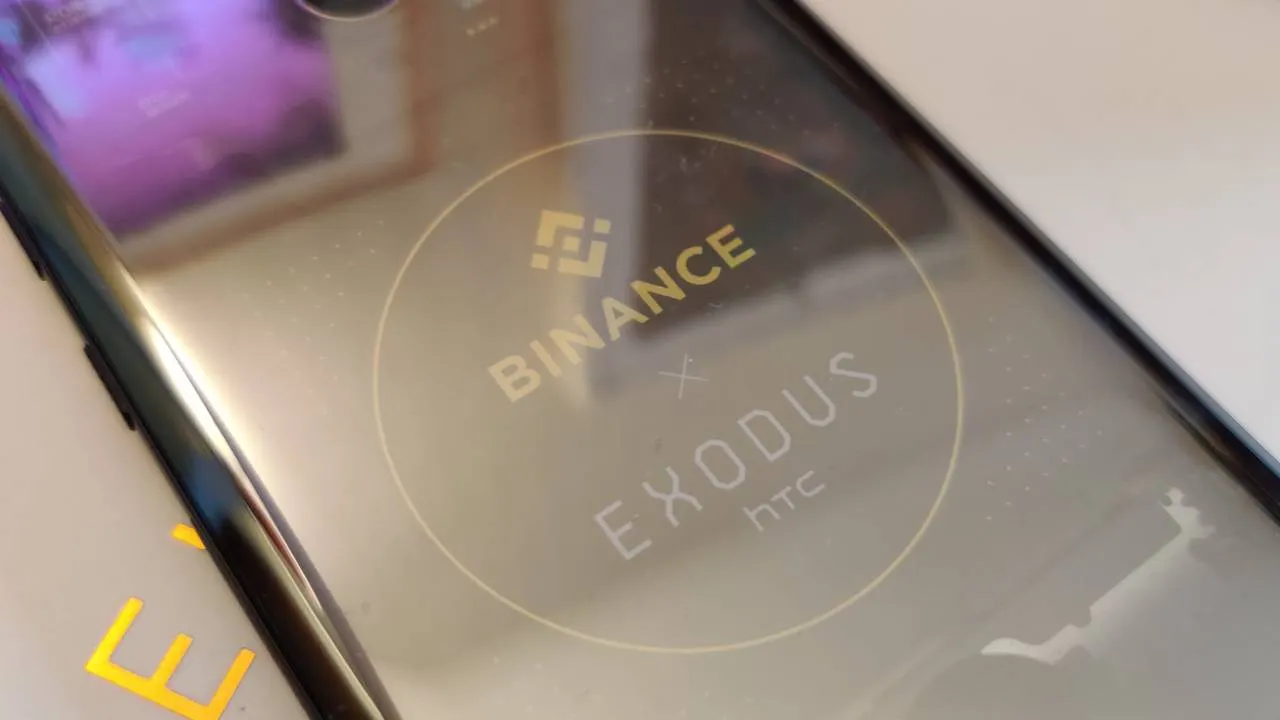
As with its other Exodus brothers, the Binance Edition handset is also capable of running a full Bitcoin node, which means you can validate and verify entire Bitcoin transactions directly off your smartphone, while helping to support the network itself.
This sounds great in practice, but the reality is unfortunately rather impractical. At the least annoying end of the spectrum is the fact that the Bitcoin ledger is big enough that you’ll need at least 280GB of free space to run the node, which means a trip to Amazon for a capacious microSD card—especially if you want space for the usual photos, movies and other media you’ll be using on your phone.
Space issues aside, the far more annoying problem is the fact that you’ll need to keep the Exodus 1 plugged into a power source and connected to Wi-Fi at all times, for the node to work. In other words, you can’t use it as a smartphone. This places its full Bitcoin node ability firmly into geek cred territory—a fancy, impressive party trick, that’s not likely to see much use after the initial trial.
Still, HTC’s chief decentralized officer Phil Chen, the mastermind behind the Exodus, is confident that “In five years it will be trivial to have a Bitcoin node stored on your phone.”
HTC Exodus 1 Binance Edition: Build, specs and features
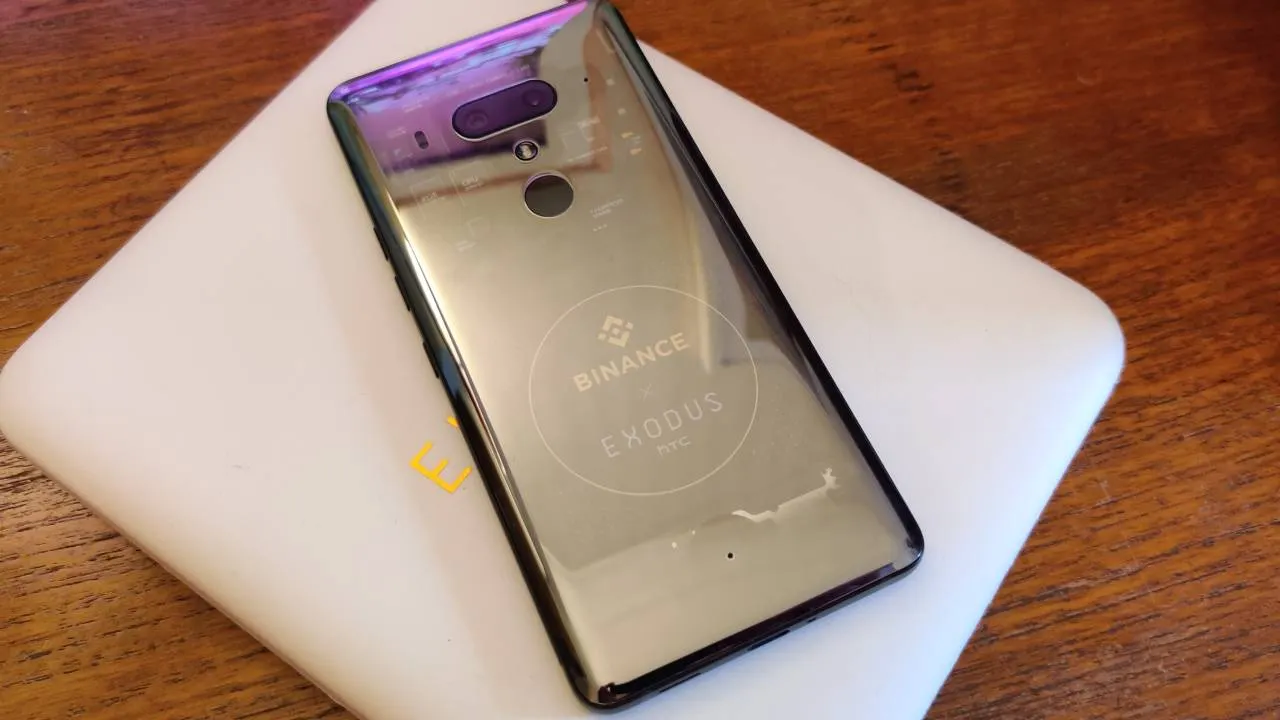
Unlike the 1s, The Exodus 1 is a beautiful, well-made device that’s a pleasure to hold. Unassuming on the front, it’s snazzy rear face will definitely grab attention and admiring glances from passersby.
Binance branding aside, we love the Exodus 1’s transparent plastic rear, which features a blueprint of the internal layout, marking out the locations of key hardware like the CPU, antenna, and other sensors. In a world filled with identical rectangular slabs, it’s refreshing to see a handset that truly stands out—albeit one that picks up fingerprints with gusto.
The sides of the Exodus 1 actually warrant a mention too. Similar to the HTC U12+, the volume and power buttons aren’t really buttons at all—rather they’re protruding bits of plastic that have a built-in haptic engine that simulates pressing a real button. Think of the Home button on older iPhones, and you’ll know exactly what we mean. Necessary? Not really, but cool nonetheless.
Shift slightly further down, and you’ll see, well, nothing. On the surface at least. Hidden beneath the body of the Exodus 1, you’ll find squeeze sensors on both sides, which let you do all sorts of things. From zooming in on maps, to opening up the camera or shrinking the screen for one-handed mode, it adds an extra dimension that you’re unlikely to find on any other smartphone.

Looking at more traditional aspects of the smartphone, the Exodus 1 sports a bright, super sharp 6in 1440 x 2880 display, with a pixel-packed 537ppi. Under the hood, it’s powered by a respectable Snapdragon 845 processor and 6GB of RAM. This slice of silicon was Qualcomm’s most powerful flagship in 2018, and while that may seem dated now, it’s more than enough to handle everything we threw at it, from multitasking apps, to heavy gaming, like the demanding Asphalt 9: Legends.
The Exodus 1 packs in a respectable 3,500mAh battery. It should comfortably last most people a day with regular use, but you’ll be reaching for the charger before bed if you’re hammering away at it with longer gaming and map sessions. It’s 18W fast charging seems slow compared to the 30-55W offerings from other manufacturers, but it’ll still get you from 0-50% in 30 minutes, which isn’t too shabby.
HTC Exodus 1 Binance Edition: camera
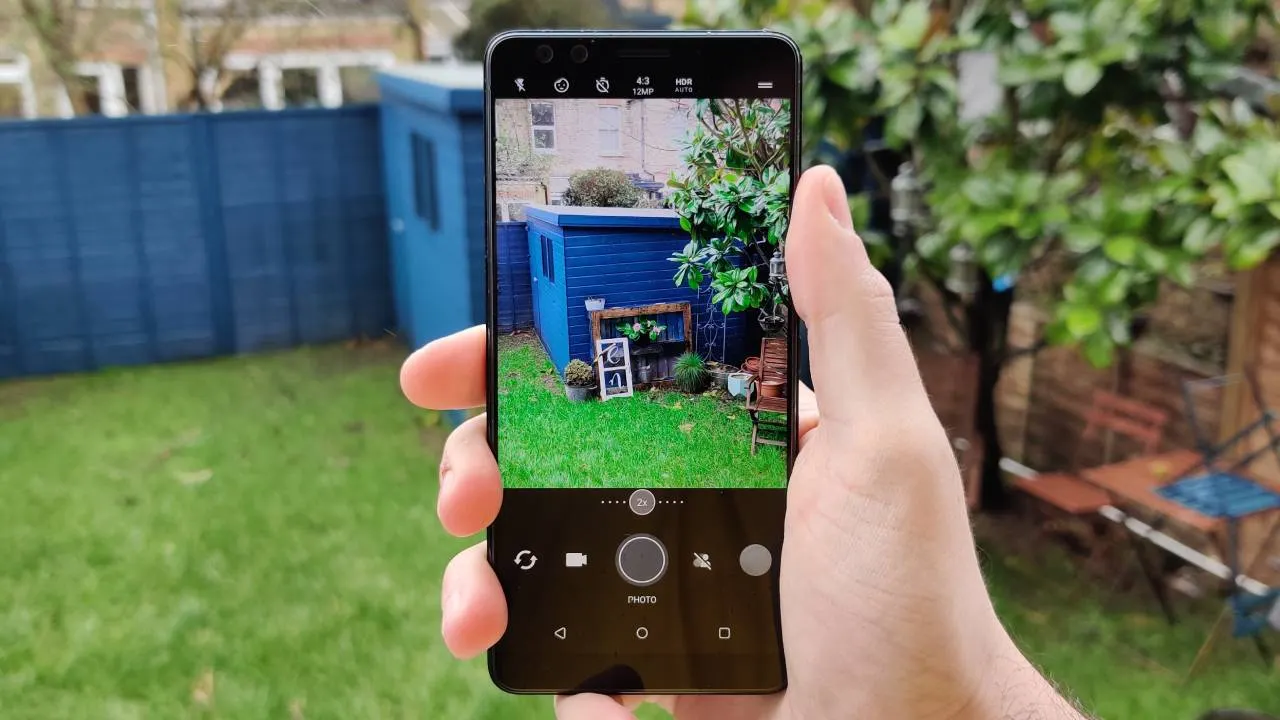
Things are fairly solid on the camera front too. The Exodus 1 packs a 12MP and 16MP camera on the rear, the latter of which provides 2x optical zoom. Shots in daylight and well-lit conditions are sharp and detailed, and the optical zoom does a decent job of getting in closer without losing detail.
Low-light shots are a different story, though. Unlike other rivals, which feature dedicated night modes, the Exodus 1 has to make do with the default photo mode. As a result, shots in dim and low light have noticeable grain, which is a shame.
HTC Exodus 1 Binance Edition: verdict
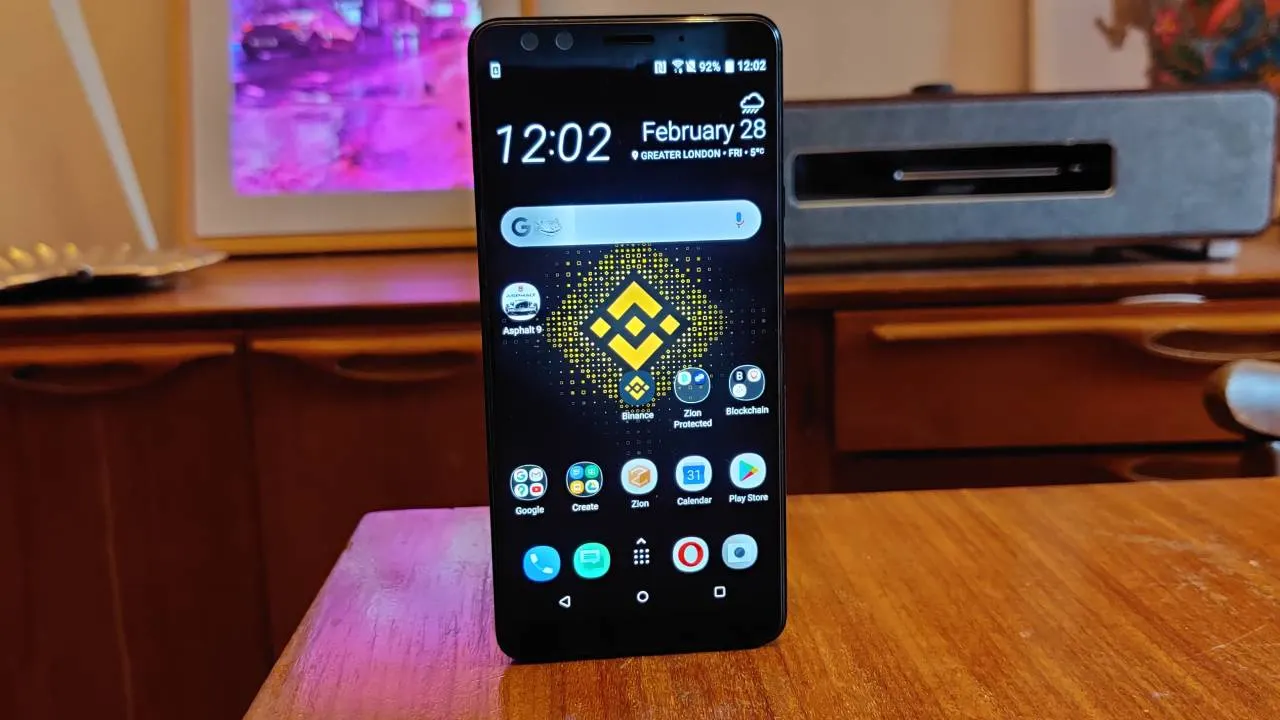
It’s impossible not to compare the Exodus 1 to its peers. There are so many smartphones out there at so many different price points, that the competition is brutal. If we were to take the Exodus 1’s crypto smarts completely out of the equation, we’d easily recommend a mid-range handset like the $499 OnePlus 7T over it.
For $100 less, the 7T offers a 90Hz display, Snapdragon 855 processor, 8GB of RAM, a camera setup with an ultra-wide lens and night mode, and a larger 3,800mAh battery with faster charging. And you can spend the money you’ve saved on a dedicated hardware wallet for your Bitcoin.
If all you’re after is a phone, then you can stop reading here. But the fact that you’re even on this page proves you’re interested in crypto—enough to consider buying a smartphone that’s slathered in crypto branding, with an innovative hardware wallet baked inside.
The Exodus 1 is a solid handset in its own right. A few years ago it would have been up there with some of the best phones in terms of raw specs, but today, it seems a little dated. Having said that, you won’t be left wanting for power, the screen is great, and it has an incredibly unique design, not to mention squeeze sensors that make it stand out from the crowd.
Is that uniqueness, coupled with a crypto wallet worth the extra $100 to you? We wouldn’t blame you if it was.

